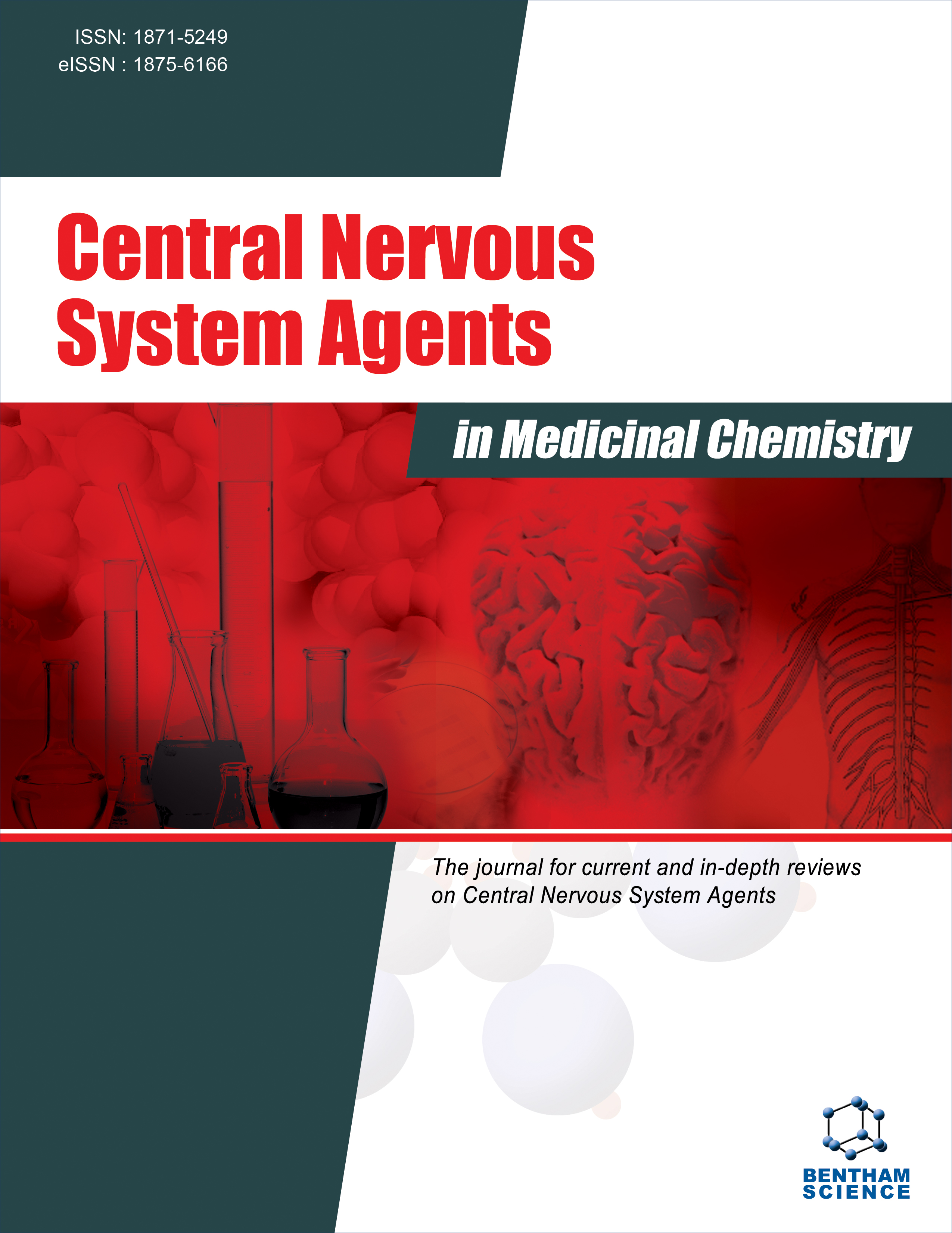- Home
- A-Z Publications
- Central Nervous System Agents in Medicinal Chemistry (Formerly Current Medicinal Chemistry - Central Nervous System Agents)
- Previous Issues
- Volume 12, Issue 2, 2012
Central Nervous System Agents in Medicinal Chemistry (Formerly Current Medicinal Chemistry - Central Nervous System Agents) - Volume 12, Issue 2, 2012
Volume 12, Issue 2, 2012
-
-
The Ubiquitous Choline Transporter SLC44A1
More LessAuthors: Vera Michel and Marica BakovicCholine is a zwitter ion that is positively charged at certain pH, which necessitates transport systems to allow this amine to cross the phospholipid bilayer of cellular membranes. The solute carrier 44A1 (SLC44A1), also referred to as choline transporter-like protein 1 (CTL1), is a recently discovered choline transporter with an intermediate affinity for choline; this transport is Na+-independent and sensitive to inhibition by t Read More
-
-
-
Choline Nutrition Programs Brain Development Via DNA and Histone Methylation
More LessAuthors: Jan Krzysztof Blusztajn and Tiffany J. MellottCholine is an essential nutrient for humans. Metabolically choline is used for the synthesis of membrane phospholipids (e.g. phosphatidylcholine), as a precursor of the neurotransmitter acetylcholine, and, following oxidation to betaine, choline functions as a methyl group donor in a pathway that produces S-adenosylmethionine. As a methyl donor choline influences DNA and histone methylation – two central epigenomic processes Read More
-
-
-
The Blood-Brain Barrier Choline Transporter
More LessAuthors: Werner J. Geldenhuys and David D. AllenDrug delivery to the brain is made difficult by the blood-brain barrier (BBB) which is selectively permeable to organic drug compounds. Several membrane solute and nutrient transporters are expressed in the BBB vasculature, which may be utilized as mechanism of delivery of drugs to the brain. Of interest to us, are the organic cation transporters which could be used to transport cationic compounds into the CNS. In this mi Read More
-
-
-
An Introduction to the Nutrition and Metabolism of Choline
More LessCholine is a ubiquitous water soluble nutrient, often associated with the B vitamins; however, not yet officially defined as a B vitamin. It is important in the synthesis of phospholipid components of cell membranes, and plasma lipoproteins, providing structural integrity as well as being important in cell signaling; it is also important in the synthesis of the neurotransmitter acetylcholine, and the oxidized form of choline, glycine betaine Read More
-
-
-
Choline Transporter CHT Regulation and Function in Cholinergic Neurons
More LessAuthors: Stefanie A.G. Black and R. Jane RylettCholine uptake into cholinergic nerve terminals by the sodium-dependent high-affinity choline transporter CHT is essential for providing choline as substrate for synthesis of acetylcholine (ACh); ACh is used by cholinergic neurons to communicate information to a wide range of tissues in central and peripheral nervous systems. CHT is expressed almost exclusively in cholinergic neurons, and is subject to transcriptional and post-tr Read More
-
-
-
Stability, Disposition, and Penetration of Catalytic Antioxidants Mn-Porphyrin and Mn-Salen and of Methylprednisolone in Spinal Cord Injury
More LessAuthors: Liqin Wu, Yichu Shan and Danxia LiuThis study measured the time courses of concentration changes following administration of the catalytic antioxidants Mn (III) tetrakis (4-benzoic acid) porphyrin (MnTBAP) and Mn (III) 3-methoxy N, N' bis (salicyclidene) ethylenediamine chloride (EUK-134) in blood and cerebrospinal fluid (CSF) of rats with a spinal cord injury (SCI) and sham controls. Parallel measurements were made for methylprednisolone, the only drug prese Read More
-
-
-
Mitochondrial Targeting for Development of Novel Drug Strategies in Brain Injury
More LessAuthors: Jean F. Soustiel and Menashe ZaaroorFor years, therapeutic approach to brain injury has been mostly physiological in essence, either based on revascularization of ischemic tissue in stroke or decompression of the swollen brain in neurotrauma. Despite tremendous efforts for the development of new strategies, translational research targeting specific cellular pathophysiological processes triggered by the injury has provided deceiving results. During the past d Read More
-
-
-
Nitrergic Response to Clostridium perfringens Infection in the Rat Brain Regions Effect of Red Light Irradiation
More LessA single intraperitoneal injection of a gram-positive pathogen Clostridium perfringens (Cp) causes a remarkable down-regulation the constitutive nitric oxide synthase (cNOS) with a simultaneous increase in the activity of inducible NOS (iNOS) and the level of reactive nitrogen species in the rat brain major regions (cortex, striatum, hippocampus and hypothalamus) at 48 h post-administration of Cp. Treatment by both a semicon Read More
-
Volumes & issues
-
Volume 25 (2025)
-
Volume 24 (2024)
-
Volume 23 (2023)
-
Volume 22 (2022)
-
Volume 21 (2021)
-
Volume 20 (2020)
-
Volume 19 (2019)
-
Volume 18 (2018)
-
Volume 17 (2017)
-
Volume 16 (2016)
-
Volume 15 (2015)
-
Volume 14 (2014)
-
Volume 13 (2013)
-
Volume 12 (2012)
-
Volume 11 (2011)
-
Volume 10 (2010)
-
Volume 9 (2009)
-
Volume 8 (2008)
-
Volume 7 (2007)
-
Volume 6 (2006)
Most Read This Month
Article
content/journals/cnsamc
Journal
10
5
false
en


